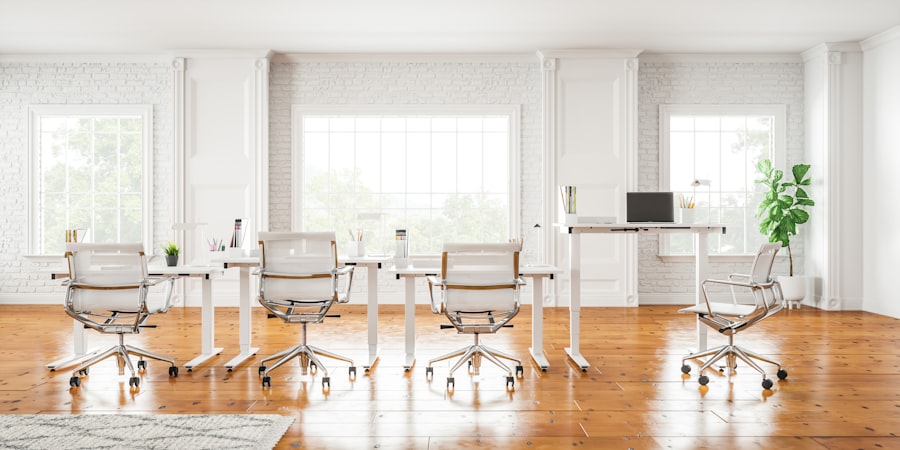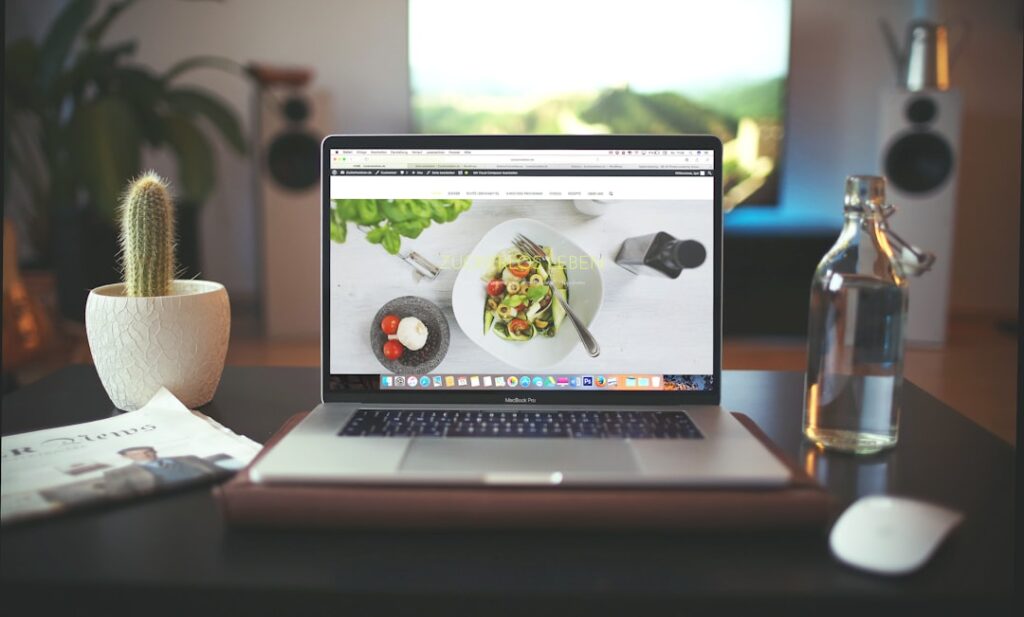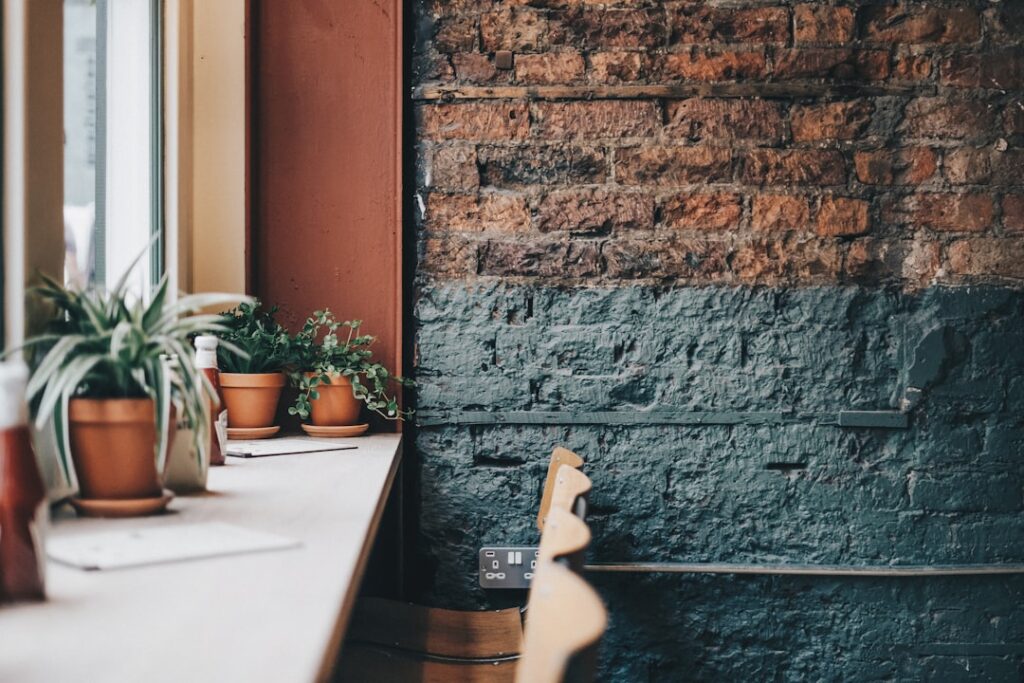A well-designed workspace is more than just an aesthetic choice; it is a critical component that influences employee productivity, morale, and overall company culture. The layout, color scheme, and furniture selection can significantly impact how employees interact with their environment and each other. For instance, an open-plan office can foster collaboration and communication among team members, while designated quiet areas can provide the necessary solitude for focused work.
The physical environment can either enhance or hinder performance, making it essential for businesses to invest in thoughtful design. Moreover, a well-designed workspace reflects the values and mission of the organization. It serves as a tangible representation of the company’s brand and ethos.
For example, a tech startup might opt for a modern, minimalist design with vibrant colors and flexible workspaces to convey innovation and creativity. In contrast, a law firm may choose a more traditional design with rich wood finishes and classic furnishings to project professionalism and stability. The workspace becomes a silent ambassador of the company’s identity, influencing not only employee satisfaction but also client perceptions.
Key Takeaways
- A well-designed workspace is important for employee productivity and well-being.
- Hiring professional interior decorators for your office can lead to a more functional and aesthetically pleasing workspace.
- When choosing the right interior decorator for your office, consider their experience, style, and ability to incorporate your brand identity.
- Incorporating brand identity into office design can help create a cohesive and professional environment.
- Maximizing space and functionality in your office is essential for creating a productive and inspiring work environment.
Benefits of Hiring Professional Interior Decorators for Your Office
Customized Solutions for Unique Business Needs
They can assess the unique needs of a business and tailor their designs accordingly, ensuring that every element serves a purpose while contributing to the overall vision. This level of customization is often difficult to achieve without professional guidance.
Streamlining the Design Process
Additionally, hiring an interior decorator can save time and reduce stress for business owners and managers. A professional can streamline the process by providing curated options that align with the company’s goals and budget. They also have established relationships with suppliers and contractors, which can lead to better pricing and more efficient project timelines.
Boosting Employee Satisfaction and Productivity
Ultimately, the investment in professional design services can yield significant returns in terms of employee satisfaction and productivity.
How to Choose the Right Interior Decorator for Your Office

Selecting the right interior decorator for your office requires careful consideration of several factors. First and foremost, it is essential to evaluate their portfolio to assess their style and previous work. A decorator’s past projects can provide insight into their design philosophy and whether it aligns with your vision for the workspace.
Look for diversity in their portfolio; a decorator who has experience across various industries may bring fresh perspectives that could benefit your office design. Another critical aspect to consider is the decorator’s approach to collaboration. A successful office design project hinges on effective communication between the client and the designer.
During initial consultations, gauge how well the decorator listens to your ideas and concerns. They should be willing to incorporate your input while also providing professional recommendations based on their expertise. Additionally, inquire about their process for project management, including timelines, budgeting, and how they handle unforeseen challenges.
A transparent approach will foster trust and ensure that the project runs smoothly.
Incorporating Brand Identity into Office Design
Integrating brand identity into office design is essential for creating a cohesive environment that resonates with both employees and clients. The design elements should reflect the company’s values, mission, and culture. For instance, if a company prides itself on sustainability, incorporating eco-friendly materials and biophilic design elements—such as indoor plants or natural light—can reinforce this commitment.
This not only enhances the aesthetic appeal but also creates an atmosphere that aligns with the brand’s ethos. Color plays a pivotal role in brand identity as well. Different colors evoke specific emotions and associations; thus, selecting a color palette that reflects the brand’s personality is crucial.
A financial institution may opt for calming blues and greens to convey trustworthiness, while a creative agency might choose bold reds or yellows to inspire energy and innovation. Additionally, incorporating branding elements such as logos or taglines into the design can create a sense of belonging among employees and reinforce brand recognition among clients.
Maximizing Space and Functionality in Your Office
Maximizing space and functionality in an office setting is vital for enhancing productivity and ensuring that employees have access to the resources they need. An effective layout considers both individual workstations and collaborative areas, allowing for flexibility in how teams operate throughout the day. For example, incorporating modular furniture can enable quick reconfigurations of spaces for meetings or brainstorming sessions without requiring extensive renovations.
Storage solutions are another critical aspect of maximizing functionality. Cluttered workspaces can lead to distractions and decreased efficiency; therefore, integrating smart storage options—such as built-in cabinets or under-desk organizers—can help maintain an organized environment. Additionally, utilizing vertical space through shelving or wall-mounted storage can free up floor space while providing easy access to essential materials.
By prioritizing both space optimization and functionality, businesses can create an office that supports diverse work styles and enhances overall productivity.
Creating a Productive and Inspiring Work Environment

Maximizing Natural Light
Natural light has been shown to improve mood and energy levels; therefore, maximizing windows or incorporating skylights can significantly enhance the workspace’s ambiance.
Minimizing Distractions
Additionally, using sound-absorbing materials—such as carpets or acoustic panels—can help reduce noise levels in open-plan offices, allowing employees to focus on their tasks without interruption.
Fostering a Positive Work Environment
Incorporating areas for relaxation and social interaction is equally important in fostering a positive work environment. Break rooms or lounge areas equipped with comfortable seating can provide employees with a space to recharge during their workday. These areas encourage informal interactions among colleagues, which can lead to increased collaboration and idea-sharing. Furthermore, integrating elements of nature—such as plants or water features—can create a calming atmosphere that promotes well-being and reduces stress levels among employees.
Budgeting and Planning for Office Interior Design
Budgeting for office interior design requires careful planning to ensure that resources are allocated effectively without compromising quality. It is essential to establish a clear budget at the outset of the project, taking into account all potential costs—including materials, labor, furnishings, and any necessary renovations. Engaging with an interior decorator early in the process can help identify realistic budget parameters based on your vision for the space.
Prioritizing expenditures is another critical aspect of budgeting for office design. Businesses should consider which elements are most important to their goals—whether it be ergonomic furniture for employee comfort or high-quality finishes that enhance brand identity—and allocate funds accordingly. Additionally, it may be beneficial to set aside a contingency fund for unexpected expenses that may arise during the project.
By approaching budgeting with foresight and flexibility, companies can achieve their desired outcomes without overspending.
Trends in Office Interior Design: What’s Hot and What’s Not
The landscape of office interior design is continually evolving, influenced by changing work habits, technological advancements, and shifting cultural values. Currently, one of the most prominent trends is the emphasis on hybrid work environments that accommodate both in-office and remote employees. This has led to designs that prioritize flexibility—such as movable partitions or multi-purpose spaces—that can adapt to varying team sizes and functions.
Sustainability remains at the forefront of design trends as well; businesses are increasingly seeking eco-friendly materials and energy-efficient solutions in their office spaces. This includes everything from using reclaimed wood for furniture to implementing smart lighting systems that reduce energy consumption. On the other hand, trends that are falling out of favor include overly rigid cubicle layouts that stifle collaboration and creativity.
As organizations recognize the importance of fostering dynamic work environments, designs that promote openness and adaptability are becoming more desirable. In conclusion, understanding these various aspects of office interior design—from its importance to current trends—can empower businesses to create spaces that not only enhance productivity but also reflect their unique brand identities. By investing in thoughtful design choices guided by professional expertise, companies can cultivate environments that inspire employees while meeting their operational needs effectively.
If you are an interior decorator looking to enhance the functionality and aesthetics of office spaces, you may want to consider incorporating ergonomic office furniture. This type of furniture is designed to promote comfort and productivity among employees, ultimately leading to a more efficient work environment. To learn more about the benefits of ergonomic office furniture, check out this article here.
FAQs
What is an interior decorator for office?
An interior decorator for office is a professional who specializes in designing and decorating office spaces to create a functional and aesthetically pleasing environment for employees and clients.
What services do interior decorators for office provide?
Interior decorators for office provide a range of services including space planning, furniture selection, color scheme coordination, lighting design, and overall aesthetic enhancement of the office space.
Why should I hire an interior decorator for my office?
Hiring an interior decorator for your office can help create a professional and inviting work environment, improve employee morale and productivity, and make a positive impression on clients and visitors.
How do I choose the right interior decorator for my office?
When choosing an interior decorator for your office, consider their experience, portfolio of past projects, communication style, and ability to understand and meet your specific needs and preferences.
What is the typical cost of hiring an interior decorator for office?
The cost of hiring an interior decorator for office can vary depending on the scope of the project, the decorator’s experience, and the location of the office. It is best to request quotes from multiple decorators and compare their services and pricing.


